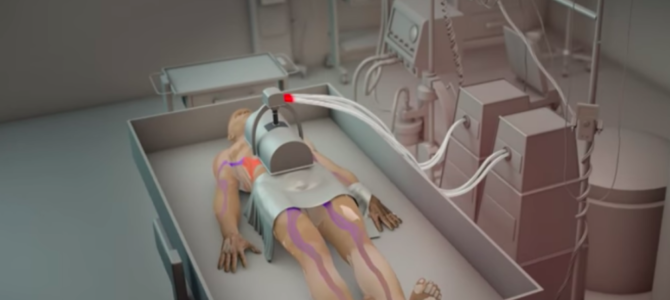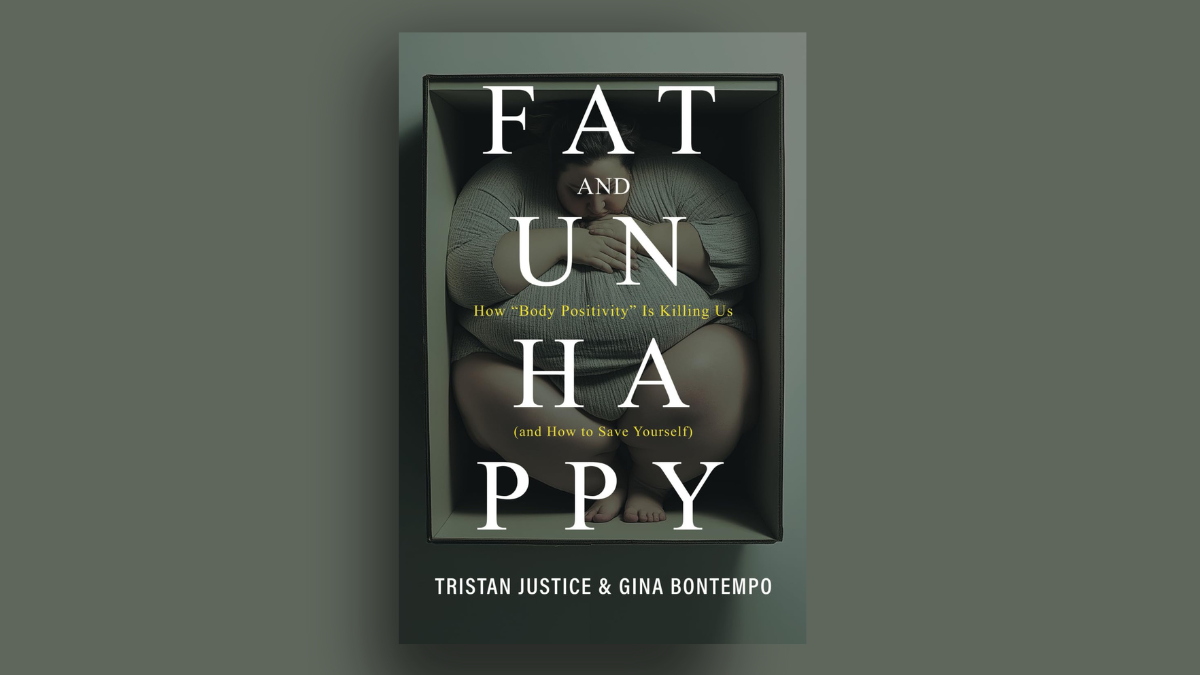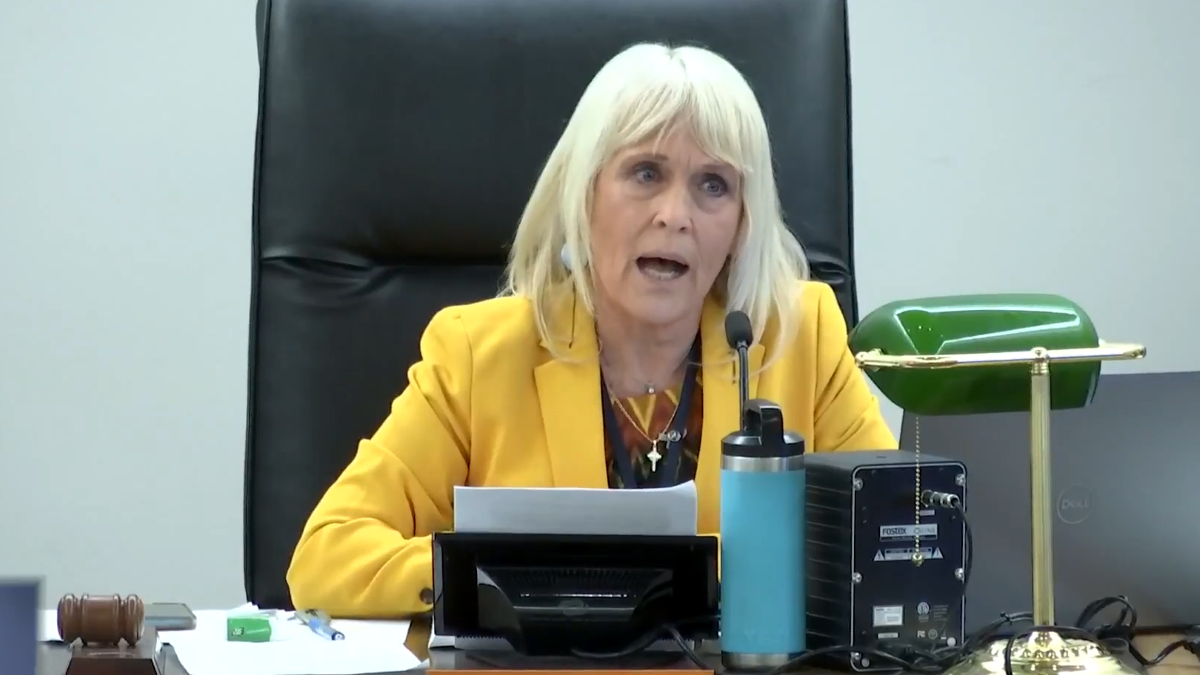
A new tech startup is marketing themselves as “committed to archiving your mind.”
Nectome has developed a new preservation process that combines embalming and cryogenic technology to perfectly preserve the brain, even the “connectome,” or map of the brain’s neural connections. The company claims their process is “a powerful brain-banking technique which can durably preserve the nanoscale structure of whole brains for centuries with no decay,” and though they can’t deliver on any sort of consciousness “download,” they’re charging 10 grand for clients to be added to the waitlist.
This isn’t the first promise Silicon Valley companies oriented toward life-extension have offered, and it won’t be the last. What’s got media buzzing about Nectome’s technique is the fact that it’s “100 percent fatal.”
“The user experience will be identical to physician-assisted suicide,” said Robert McIntyre, computer scientist and co-founder of Nectome. A heart lung machine is used to pump embalming fluids through the patient, killing them in the process but preserving their brain at peak freshness.
‘Product Market-Fit Is People Believing That It Works’
In the ultra-progressive state of Oregon, physician-assisted suicide has been legal for over twenty years. It seems fitting that the first human brain on which Nectome tested their cryo-embalming process, that of a just-deceased elderly woman, came out of that state.
Nectome has received over $915,835 in federal grants. Their “public health relevance statement” has big claims for the scientific advancement: “These technologies for whole-brain analysis are a vital step towards deep understanding of the mind and of many brain diseases — they promise to do for neuroscience what whole-genome analysis has done for biology.”
One can understand how a pristinely preserved human brain, connectome and all, could be useful to scientists. But that’s not how it’s being marketed to clients. To them, it’s a distant hope to transition out of mortal flesh and blood and live on in another form. McIntyre put it bluntly, “Product market-fit is people believing that it works.”
McGill University neuroscientist Michael Hendricks wrote in Technology Review in 2015, “It is this purposeful conflation of what is theoretically conceivable with what is ever practically possible that exploits people’s vulnerability,” and that, “Any suggestion that you can come back to life is simply snake oil.” Transhumanist responses are far from reasonable, consisting of “alternating demands that we trust our intuition about nonexistent technology (uploading could work) but deny our intuition about consciousness (it would not be me).”
Hendricks told Technology Review: “Burdening future generations with our brain banks is just comically arrogant. Aren’t we leaving them with enough problems?” Nectome’s “storage device” isn’t for sale yet, so we don’t know how much it costs. Cryogenic storage at Alcor Life Extension Foundation in Scottsdale, Arizona costs around $80,000. “I hope future people are appalled that in the 21st century, the richest and most comfortable people in history spent their money and resources trying to live forever on the backs of their descendants. I mean, it’s a joke, right? They are cartoon bad guys.”
Far from offering hard science to extend human lives, which we’ve been pretty successful at so far (average life span has essentially doubled in the last two hundred years), what Connectome is currently offering is a purely religious rite. You could call them “hucksters,” as Robert Tracinski has. That’s one way to look at it, but the transhumanist con is more than just cheating clients out of their money. It is religious in nature: do this deed, and you have a chance at immortality. Believe in it enough to put your money in it, and your act of faith might earn you another life. It is an ex operae baptism; it doesn’t matter whether the person who baptizes you is a true believer or not, the result is believed to be the same.
Simply being wealthy doesn’t put you in Nectome’s market. You must be deeply arrogant and supremely confident in technological advancement or deeply fearful and supremely confident in technological advancement. Prominent investor in life-extending technologies Peter Thiel has admitted he has “always had a sense that death is a terrible, terrible thing,” and he’s not alone.
Even if a client isn’t fearful of death and doesn’t buy into the preposterous idea that his consciousness can be revived (scientists aren’t even close to figuring out how memories could possibly be preserved), having his brain preserved and uploaded as a “program” based on the idea that it is worth enough to have future generations maintain it, even interact with it, is the height of arrogance. It’s a self-centered ethos that seeks attention and admiration even after death. Transhumanism involves faith in science, sure, but that’s merely the means to the end.
A Religion Of Self
Really, transhumanism is a religion of self, embedded with the doctrine of sola feels, all bundled into one medical procedure that literally ends your life. It is Oprah’s garbage advice taken to its very extreme — to be yourself (and therefore, to keep being yourself) is the highest honor. If you are the highest value, then of course you should preserve your consciousness. Of course you should burden posterity with “you,” even when you’re dead.
But of course, you are not deserving of the highest honor. You are, as a matter of fact, quite wretched. Do you really think your miserable consciousness is even worth keeping around? Are you that important? Will you live on atop the mantle in the house of your great great grandchildren, as a digital “mirror mirror on the wall” instead of a vase of ashes, answering questions or offering occasional consolation? Will posterity love you enough to raise enough money for you to have any sort of physical body? Even if you were revived during the lifetime of the people who knew and loved you, wouldn’t the blurry shadow of your personality they call by your name be a mere crutch for grieving family members, keeping them from accepting that you are gone?
Transhumanism is about cheating death, but death and suffering is wrapped up in every twist and turn as self-worship evolves to take on more sophisticated, far-fetched forms. It is merely one flavor of selfie religion. The same religion that says to do “what’s best for you” promotes killing preborn Down Syndrome babies because they are inconvenient. This religion allows frozen embryos to be destroyed and made into jewelry as long as it makes the mother feel good. This religion says it’s okay to deprive a child of natural pregnancy within its biological mother and to buy and sell babies via surrogacy (which often involve pregnancy “reductions,” i.e. abortions), reducing other women to simple “breeders,” because that’s just what you want.
This religion says it’s okay to create and destroy human embryos just to see if their genomes can be manipulated for purposes of “designing” babies. This religion says it’s okay to end your life at 29 because mental illness is too painful to continue to live through. This religion says self-delusion is “living your truth” and it makes you a “hero,” even though suicide rates for “transitioned” people are essentially the same as for non-transitioned gender dysphoric people.
The selfie proverbs of “you do you” “treat yo self,” “follow your heart,” and “just be yourself” sound well and good on the surface, but “living your truth” often comes at others’ expense. People attempting to live as the opposite sex of their own biology know this firsthand, and while the suffering may not be as personal or acute, transhumanists know that others will be burdened with their biological tissue for decades to come.
And so we’ve come to the point where we can add cryogenic suicide as one of the innovations of our self-worship. Assisted suicide already places avoidance of personal suffering as the highest value, above the sanctity of life. But suicide by preserving your brain, in blind faith that it will be archived, mapped and downloaded so a version of you can “live,” has taken assisted suicide to a higher level of self-centeredness.
No doubt this religious rite will be seized upon by the usual suspects, the high priests and priestesses of selfieism. The Cecile Richards’ and Hillary Clinton’s and Wendy Davis’s of the world will tell us assisted suicide really isn’t so bad, even though infanticide of disabled babies is legal in the Netherlands, and in Belgium minors are eligible for assisted suicide and some people are being involuntarily euthanized.
They will spin us a story, just like Nectome and Alcor, that death isn’t the end, not even in this world — that these people could live on and be “healed” somehow at some point in the future, or at least contribute to scientific study in some way. They will tell us that efforts to avoid death and discomfort (for born humans only) are of utmost importance, and sometimes natural death is part of that. Indeed, it’s already important enough to have received nearly a million dollars in federal funding for this one company alone.
These priests and priestesses, huckster cult leaders that they are, will probably tell us we mustn’t infringe on transhumanists’ religious freedoms, because the desire for cryogenic death is a sincerely held religious belief. And so they’ll keep filling their jugs of oil to anoint the slope that leads to even more innocent death, because more death is the price we pay for the sacralization of the religion of self.
It may be a religious rite, and it may be pushed by confidence men, but let’s be honest and call cryogenic suicide what it is: selfie death.









